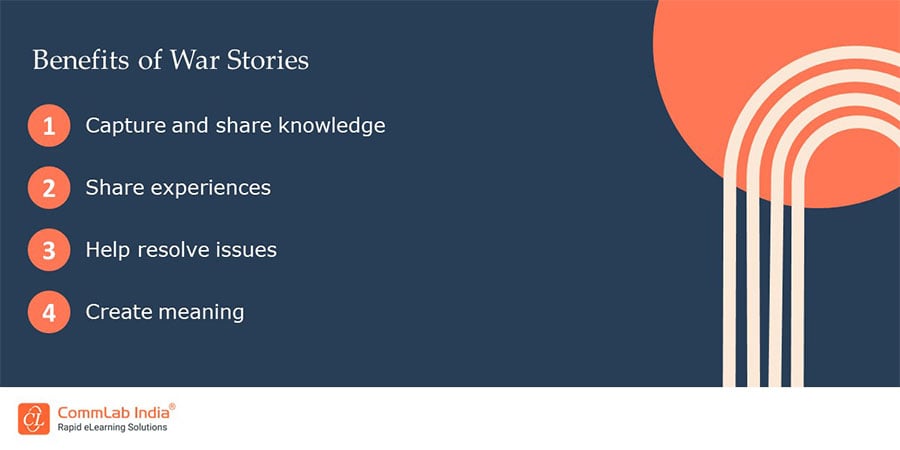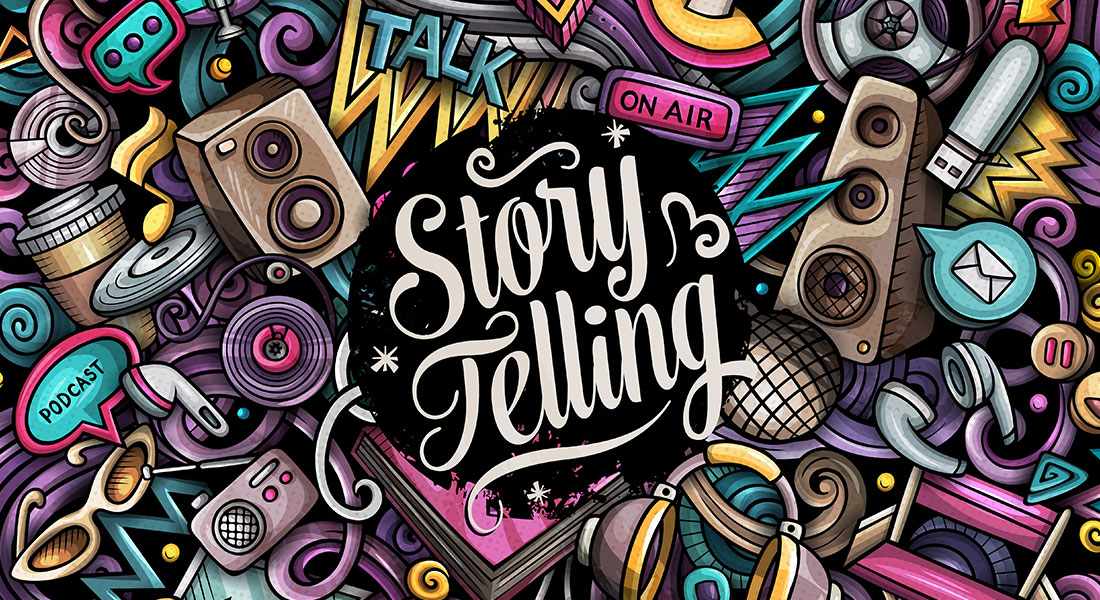Storytelling in Organizations – An Overview of Its Applications

From the earliest moments of our lives, storytelling has woven itself into the fabric of our existence. From the soothing lullabies that cradled us to sleep as infants to the imaginative tales that ignited our curiosity as children, stories have been our constant companions. These narratives, etched into our minds with vivid characters and intricate plots, possess an uncanny ability to endure the tests of time.
Storytelling Alchemy: Transforming Words into Worlds
This remarkable recall value is a testament to the power of storytelling, an art that has been nurturing our minds since the dawn of humanity. Here are a few remarkable features of storytelling:
- Stories have been used since the dawn of mankind for communication, entertainment, and education.
- From sharing knowledge to passing on words of wisdom, stories have the power to subliminally get the message across to the audience.
- Stories provide context and meaning to process information, help develop trust and commitment, and elicit an emotional response from listeners.
Benefits of Organizational Storytelling
Say yes to:
- Engagement
- Knowledge sharing
- Branding
- Conflict resolution
Workplace War Stories
War stories refer to informal stories commonly exchanged between colleagues
at the workplace to share experiences.
Organizations are now leveraging the power of war stories to share experiences and transfer tacit knowledge with companies such as Johnson & Johnson creating an online database of employee stories.
→ Download Now: Instructional Design Strategies to Design Engaging eLearning Courses
The best example of war stories is of Xerox field service staff. When Xerox launched a study of their service staff, looking for ways to boost productivity, it found tech reps often gathered in common areas and exchanged stories from the field. So, apart from repairing machines, they shared experiences that helped them in their work.
|
An article by Harvard Business Review says field reports (which can be knowledge repositories) routinely filled by employees often |
Apart from being a cost-effective tool to capture the valuable tacit knowledge of employees, war stories also create meaning and enable understanding through the use of metaphors to enable easy comprehension.
With organizations now embracing technology-enabled learning solutions, a major chunk of training programs has moved online and thus, humble storytelling too has found its digital doppelganger.

Tales that Transcend: The Power of Storytelling in Organizations
The use of stories for communication, entertainment, and education is deeply ingrained in human history and culture. Our brains are naturally attuned to storytelling, and this is reflected in how we perceive, remember, and make sense of information.
Purposes Storytelling Serves
Engagement
Stories capture attention and engage employees, customers, and stakeholders more effectively than traditional presentations or reports. People are naturally drawn to narratives and can relate to characters and situations, making information more memorable and relatable.
Communication
Complex ideas, strategies, and goals can be conveyed more comprehensibly through storytelling. By putting concepts into relatable scenarios, organizations can clarify their vision and mission, making it easier for employees to understand and support these objectives.
Culture Building
Stories are a powerful way to transmit an organization's values, beliefs, and culture. When employees hear stories that exemplify the desired behaviors and values, it reinforces the culture and helps new members assimilate more smoothly.
Knowledge Sharing
Through storytelling, employees can share experiences, successes, failures, and lessons learned. This fosters a learning culture where knowledge and expertise are shared, promoting innovation and growth.
Change Management
During times of change or transformation, stories can help alleviate resistance and uncertainty. Sharing stories of previous successful transitions can inspire confidence and a sense of unity.
Leadership
Leaders who can tell compelling stories are often seen as more relatable and inspirational. A well-told story from a leader can inspire, motivate, and build trust among employees.
Branding
Stories are a fundamental part of an organization's branding strategy. They help create an emotional connection with customers and stakeholders by showcasing the company's history, values, and mission.
Conflict Resolution
Stories can be used to address conflicts and misunderstandings. By sharing perspectives through narratives, parties involved can gain empathy and better understand each other's viewpoints.
Storytelling Elevating eLearning Effectiveness through Narrative Engagement

eLearning courses that are crafted as a story will engage learners on an emotional level. Storytelling can be used to transfer implicit knowledge such as the organizational culture, values, and managerial systems. This is because stories let employees enjoy new experiences, form opinions, make judgments, and develop their own beliefs and attitudes. Thus, stories help transfer culture and organization-specific knowledge.
Though storytelling is a powerful tool, can it be used effectively to teach the core competencies of an organization?
To really understand the effectiveness of stories in knowledge transfer, let’s consider a study in contrasts. Companies ABC and XYZ are looking to roll out an eLearning course on safety in hazardous areas.
Company ABC goes the traditional eLearning way and offers its employees a course replete with click-on interactivities and slides filled with the importance of safety, statistics, the dos, don’ts, and safety procedures.
Company XYZ goes down to ground zero and talks to the service personnel working in hazardous areas. They collect their experiences: the challenges they face, the lessons learned, prevention techniques, what they do in case of an incident, and the safety precautions they follow.
They collate this knowledge along with the plain facts and figures and develop an online course that tells the story – of a hero who identifies a potential accident and averts it by alerting the authorities on time. This story has a clear beginning, a middle, and an end along with tension and dialogues. This course helped employees think and process the information and ultimately equipped them with a course of action when they face such situations in the future.
Here, whose strategy do you think is correct?
XYZ? Is ABC wrong because it didn’t adopt storytelling?
Well, while there is no right or wrong approach, as Jennifer Neibert shares, stories can be a powerful tool to help convey content in the appropriate context.
While that was about storytelling, a lot of other instructional strategies can be used to facilitate effective knowledge transfer. Explore some popular strategies in this eBook.





